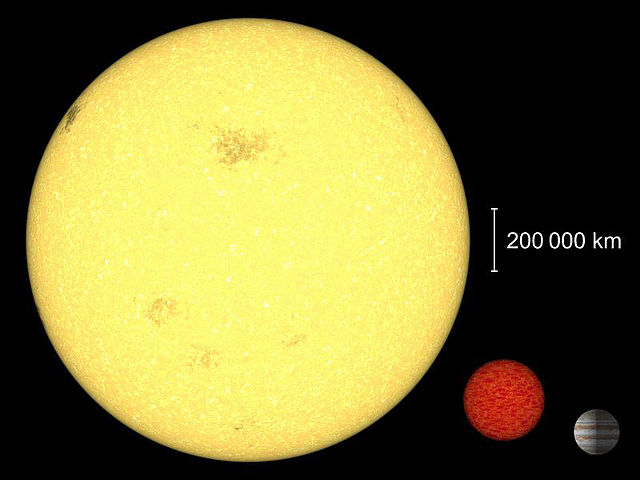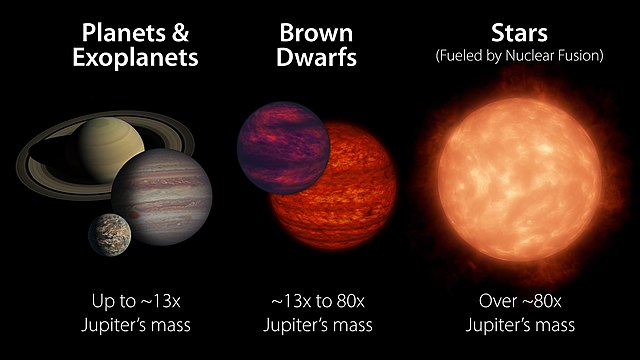A sub-brown dwarf or planetary-mass brown dwarf is an astronomical object that formed in the same manner as stars and brown dwarfs but that has a planetary mass, therefore by definition below the limiting mass for thermonuclear fusion of deuterium .
Some researchers call them rogue planets whereas others call them planetary-mass brown dwarfs. They are sometimes categorized as Y spectral class brown dwarfs.
Comparison: the Sun (yellow), a young sub-brown dwarf (red), and Jupiter (multi-colored). As the sub-brown dwarf ages, it will gradually cool and shrink.
Brown dwarfs are substellar objects that have more mass than the biggest gas giant planets, but less than the least massive main-sequence stars. Their mass is approximately 13 to 80 times that of Jupiter (MJ)—not big enough to sustain nuclear fusion of ordinary hydrogen (1H) into helium in their cores, but massive enough to emit some light and heat from the fusion of deuterium (2H). The most massive ones can fuse lithium (7Li).
Artist's concept of a T-type brown dwarf
The smaller object is Gliese 229B, about 20 to 50 times the mass of Jupiter, orbiting the star Gliese 229. It is in the constellation Lepus, about 19 light-years from Earth.
Planets, brown dwarfs, stars (not to scale)
A size comparison between the Sun, a young sub-brown dwarf, and Jupiter. As the sub-brown dwarf ages, it will gradually cool and shrink.




